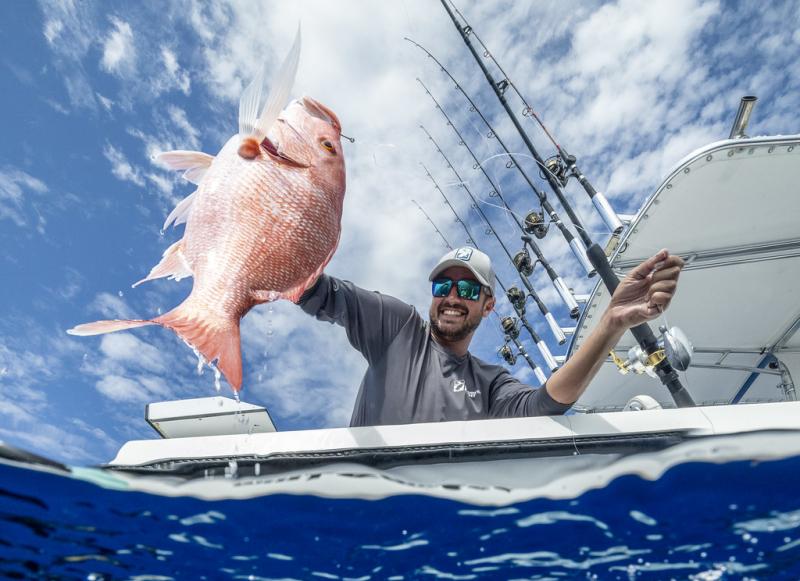To improve survival of released reef fish, Return 'Em Right collaborated with for-hire captains, private recreational anglers, scientists, and fisheries managers. They created a standard set of best release practices for reef fish.
This effort culminated in the development of the Return ‘Em Right Best Release Practices Manual and fact sheets. This manual is a resource for anglers to guide their decisions on the water and improve survival of reef fish.
Why is it important for anglers to use best release practices?
The safe handling and release of recreationally caught fish is essential to supporting healthy fish populations. An individual angler may catch and release relatively small numbers of fish in a single outing. But together, millions of saltwater recreational anglers in the Gulf of Mexico collectively account for millions of fish that are caught and released. A substantial portion of these fish die upon release.
Fish that are caught in relatively shallow water, 50 feet or less, usually survive release when handled properly. But fish reeled up from beyond 50 feet likely need extra help to survive. Fish pulled up from depth can experience barotrauma, which is a pressure-related injury caused by the expansion of gasses in a fish’s tissues and organs. This expansion makes it difficult for the fish to swim back down, and can cause internal damage and bloating. It often shows up as bulging eyes, bloated midsection, protruding intestines, bubbling scales, and the stomach protruding from the mouth.
Given the variability of fishing techniques, depths, and environmental conditions, there is no one-size-fits-all practice that ensures survival of all released fish. Anglers should be equipped with the information to make the best decisions during their fishing trips. This will give each fish its greatest chance to survive release in order to grow, spawn, and be caught again.
What does the manual include?
The Return ‘Em Right program worked with recreational anglers, for-hire captains, fisheries managers, and scientists to create a manual on best release practices.
It includes information on actions anglers can take to help fish survive at specific decision points:
- Preparing for a fishing trip
- Choosing a fishing location
- Fighting fish
- Handling and releasing fish
- Encountering predators
- Wrapping up a trip
What are the key elements to remember on the water when releasing reef fish?
- Effective catch and release is situational. It is an angler’s responsibility to be informed about making the best release decision depending on the conditions
- If a fish is NOT exhibiting signs of barotrauma: Use a dehooking device to release fish as quickly as possible
- If a fish IS exhibiting signs of barotrauma: Dehook the fish using a dehooking device, when appropriate, and descend the fish (or vent if descending isn't feasible
The manual and fact sheets include much more information to make sure we are giving reef fish the best chance of surviving when it comes to release. Be sure to check out the Return ‘Em Right training on best release practices, too. Eligible anglers will receive a free package of release gear in the mail.
Project Funding and Partners
This $30 million project was selected and funded by the Deepwater Horizon Open Ocean Trustee Implementation Group as part of the 2019 Open Ocean Restoration Plan.
Project partners include:
- NOAA Restoration Center
- Florida Sea Grant
- Gulf States Marine Fisheries Commission
- Coalition of anglers, industry groups, state agencies, universities, government and non-government organizations




